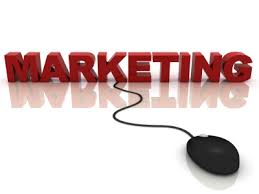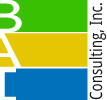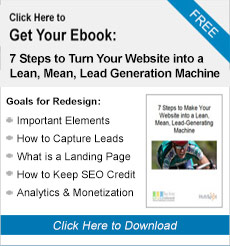 With all the different internet-based marketing methods out there, it is hard to figure out where best to spend your money to get the most bang for the buck.
With all the different internet-based marketing methods out there, it is hard to figure out where best to spend your money to get the most bang for the buck.
As an Internet Marketing professional, I have used all of the available internet marketing methods to drive traffic to my clients websites, capture warm leads, and nurture them towards sales. So below I give you an honest evaluation of the different strategies and their pros and cons so you can understand what you are getting for your money and what I recommend in most cases.
Affiliate Marketing
What Affiliate Marketing is
Affiliate marketing is where a so-called "expert" writes an articles recommending service or product providers in a particular market segment. People searching for advice on the product or service category think they have read an "independent source", but instead they have read something that ranks your company among your competitors. The affiliate marketers use target keywords to drive customers to their site and then refer them to yours with a recommendation to buy your products because you have paid them and a link to your site.
Pros and Cons
Affiliate marketing is the most expensive way to get a lead, but it is instant "on". So if you have a lot of money and you are in a hurry to get more sales this is an ok choice for you.
You accumulate nothing, when you stop paying, you stop getting leads and referrals. You have built up no SEO on your own site through target-keyword-rich content.
Google Adwords aka Pay Per Click (PPC)
If you aren't familiar with google adwords and pay per click, read the following 2 paragraphs:
Google is the number one used search engine in the world. So when someone searches for say a "red bike" or "network security" on google, google's search engine uses a complex formula to decide which website URLs to bring up first, second, third, all the way down for 10+ pages. The formula takes into consideration how many times the word "red bike" or "network security" appears on each website as a "keyword", how many reads the website gets, how many "likes" on social media, how many comments, and a number of other factors.
But in the top pink section and the side sections there are paid advertisements which are there simply because someone paid a dollar figure set by google for the words "red bike" or "network security" to be in the top paid advertised section. It could be anywhere between $.50 and $21.00, most often somewhere between $4 to $7 is paid out by the company purchasing that PPC word every time you click on it. And if they are in the top 3 positions in the pink, that means they paid more than their competitors to be there whose ads appear down the side. A lot of people know about the pink ads and ignore them and go to the "organic" search results just below because they know that the most relevant website will come up to the top of the white section of their list.
Pros and Cons
With Pay Per Click, you pay forever, and once again you accumulate nothing, when you turn it off, you stop getting traffic and leads. But again PPC is "instant on". After a couple of phone consultations with google you can sign up and choose the words you want for PPC. It takes some expertise to buy the right words, to use their new tool: "Keyword Planner" and Google Analytics to figure out which words potential customers are using to find products and services in your category. There is also an art to long-tail keyword strategy to get more traffic, but once you pay you start getting leads.
You build nothing when you buy Adwords, the minute you stop paying, you go back to zero traffic and leads instantly.
SEO
SEO used to be "the thing" about 4 years ago. You hire an SEO consultant to tell you what keywords to target and to get them to "optimize" your website for those keywords. They also in some cases were able to help you artificially get inbound links which used to be a very important part of how google ranked your site in an organic search. Google changed the way it gives credit lowering inbound links as a parameter about a year ago. Google did this to make its own Adwords sales more important and to take the money companies spend from inbound links and put it back in their own pockets; Smart of them. SEO can also be tracked via marketing automation software like Hubspot and Marketo now. Therefore, SEO vendors are dieing away now.
You still get inbound links when you write great content that people want to post on their own website, most of mine come from hardware and software vendors who like what I write. When they post my articles a link to mine on their website and then all the traffic comes to my site to read it. So inbound links are still valuable in that they get you a lot more traffic and reads.
SEO is now something you get primarily through keywords targeted on your own website pages, the bulk of your pages come from your blog, and keyword performance and links are, as I said, easily tracked through inbound marketing automation software. A lot of SEO credit is also given for interactions, likes and shares via social media. And now with Google's hummingbird update, more credit is given for contextual search.
Inbound Marketing
Inbound Marketing is about driving traffic to your website through great content that you create and then own forever. You get the word out via social media. When people read your content, they leave comments, "like" it, and share it. The more people that read it, google gives you more credit for that traffic and ranks you higher on an organic search for your product or services when someone is looking for them.
There is no doubt in my mind that Inbound Marketing is the preferred method of marketing for companies with long-term strategies since you get to keep what you pay for with inbound marketing. You get great content in which you show you are a thought leader, you promote the content and get the word out, you capture leads and move people down the sales funnel through educational offers.
Pros and Cons
Takes time, it takes 6 months to increase web traffic and leads by 300%, but then you own what we build for you forever. And once your large technical blog and educational offers are up, it will continue to drive traffic to your site and capture warm leads forever. The email lead nurturing campaigns we set up will continually move people down the sales funnel. We set it up to work automatically through automated software for you.
Another pro about Inbound Marketing is that if you stop spending money on it, traffic and leads degrade very slowly over time. Your company can keep traffic and leads from degrading altogether by maintaining a low level of work which costs little. But if you want explosive growth in sales, you can always put more time and money into inbound marketing.
Conclusion
Inbound is the new defacto standard of marketing for tech companies today.
I work with two of the biggest-inbound-marketing-automation-software companies in the world: Hubspot and Marketo. Hubspot is the #2 fastest growing software company in the world. Marketo went public a year ago and boasts an enterprise customer list of 4000+ customers. Hubspot just broke the 10,200 customers level. There is a 3rd higher-tier-marketing-automation software called "Eloqua" which is highly customizable and the smallest license is for a marketing team of a minimum of 10 people, Eloqua was recently purchased by Oracle. Companies already exceeding $50 million in annual revenue sometimes consider Eloqua.
Companies with a long-term strategy that want to keep what they invest choose inbound marketing as their preferred internet marketing method, but most also use PPC and/or Affiliate Marketing for the quick hit until they can build up their inbound enough to cut the huge expense of PPC and Affiliate Marketing forever.
For a free inbound marketing evaluation of your company website or more information on pricing, please contact laurie@bayareainbound.com or 510-543-7593.
For more info on how to turn your webbsite into a lean, mean, lead-generation machine click the following Call-to-Action Button below:

